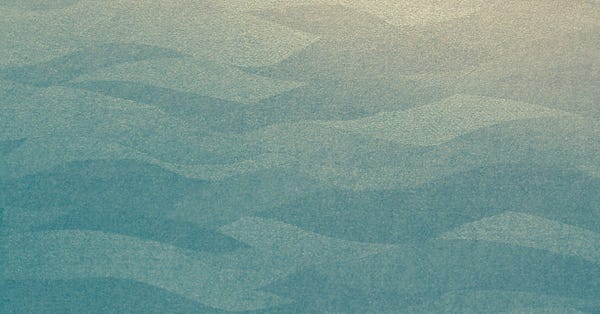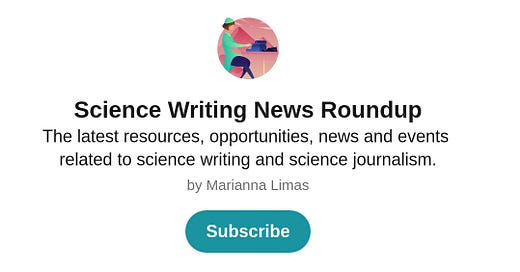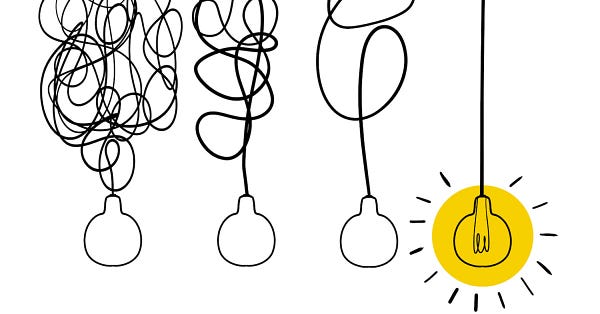✍️Science Writing News Roundup #34 (March 9, 2021)
Science writing for kids: Techniques, tips, and tools for a tough audience + It’s time for data visualizations to be more inclusive of gender information
Science writing for kids: Techniques, tips, and tools for a tough audience. As many science writers know, writing for a younger audience poses its own set of challenges. Students are busier than ever, with media of all types competing for their attention. When you write for young readers, your prose needs to be snappy, simple, and engaging to grab and hold their attention. You need to strike a balance between oversimplifying information and presenting material that is too long or complex, according to NASW members Ellen Kuwana, Caitlin Shirts, and Lynne Lamberg.
🖊️ Tips
How to spot misleading science reporting: A discussion on what to look for when reading and evaluating science news articles.
It’s time for data visualizations to be more inclusive of gender information. “For decades, visualizations that display gender data have promoted a binary mindset, which marginalizes and excludes those who don’t identify as strictly male or female. Nonbinary concepts of gender are becoming more and more accepted, and the distinction between assigned sex and gender is finally being recognized on a societal scale,” writes Alison Booth.
The word on disability: The general rule of thumb for reporting disability should be that when a journalist is unsure about language choice, they should ask the expert. In this case the expert is the disabled person whom the journalist is interviewing.


🎟️ Interview
Jessica Wapner’s Wall Disease unravels how border walls affect the mind. In her short book Wall Disease: The Psychological Toll of Living Up Against a Border, science journalist Jessica Wapner explores how living by a border changes people. In this article, Wapner talks with Rodrigo Pérez Ortega about her motivation to disentangle the effects of walls on people’s brains, the process of writing a book during a pandemic, and the many shades of “wall disease” that affect the people who live near walls.
🖥️ Videos
Science journalism, the COVID beat, and the next pandemic. In this panel discussion hosted by the Johns Hopkins Science Writing Program, a JHU public health expert, a Vox science editor, and a COVID beat reporter wrestle with what they've learned, what science journalists can do better, and what to expect next.
Diving into COVID-19 data #3: Communicating data. Third session in a series of three webinars aimed at helping journalists and science communicators better understand COVID-19 data. Check out #2: Engaging with data providers, and #1: Analyzing sources.
Hey, policy stories don’t have to be boring! (it just feels that way sometimes) A conversation with Dave Levitan, Rebecca Leber and Sudip Parikh.
Sharing planetary science: Writing for the public. Learn tips for writing about planetary science for public audiences from Emily Lakdawalla, planetary scientist and science communicator, and Martin Ratcliffe, astronomy educator and science writer.
Writing science into people's brains. Journalists and editors – including science writers – learn to exploit tricks that seek to manipulate what we pay attention to. As chair of the Association of British Science Writers and a regular contributor to Chemistry World, Andy Extance has become familiar with many of them.
Making science the news with BBC science journalists, Rebecca Morelle and Jonathan Amos.
The effects of anthropomorphism in science writing for non-experts: Rockwell McGellin provides a summary of his recently published paper on anthropomorphism in science communication.
🌏 Opportunities
EJN is offering reporting grants to Indigenous journalists to support the production of in-depth stories that will call attention to climate justice, biodiversity, sustainable ecosystems and other issues related to the rights and well-being of Indigenous peoples and communities.





📚 Events
Building Confidence in COVID-19 Vaccination: A Toolbox of Talks From Leaders in the Field (March 9, 2021)
Writing your best grant and award applications (Science Journalists Association of Australia) (March 10, 2021)
A Virtual Conversation with Carl Zimmer, Author of Life’s Edge: The Search For What It Means To Be Alive (March 11, 2021)
A Solutions Journalism Approach to Covering the Pandemic (March 11, 2021)
Crypto Journalism: Making sense of Bitcoin (Kavli Conversations on Science Communication, March 11, 2021)
Celebrating science with the Young People's Book Prize (March 12, 2021)
The Coronavirus Unveiled: What COVID-19 Is Teaching Us About Life, with Carl Zimmer, science columnist for The New York Times. (March 17, 2021)
Climate Conversations: Climate & COVID-19 (March 18, 2021)
SCIENCE TALK '21 (March 24-26, 2021)
🙌 Jobs
Media and Communications Officer, European Geosciences Union, Munich, Germany
Science Communicator, Animate Your Science, Remote
Social Media Producer, AAAS, Washington, DC
Scientific Communication Officer for the Human Brain Project, Forschungszentrum Jülich, Germany
Sr. Science Communications Officer, Penn Medicine, Philadelphia, PA
Science writers, LabRoots, Remote
Breaking News Editor, The Conversation US, Boston, Massachusetts or Brooklyn, New York
More jobs 👉Science Writing News Roundup #33
👉 Don’t miss any updates from the Science Writing News Roundup:
Worried you missed something? See previous newsletters here. What would you like to see in the newsletter? Please send me your suggestions by replying to this email: sciencewriting@substack.com😃
If you liked this post, share it with your friends 💙




